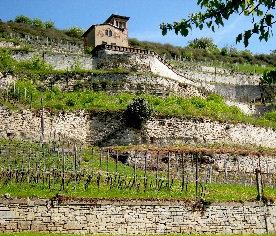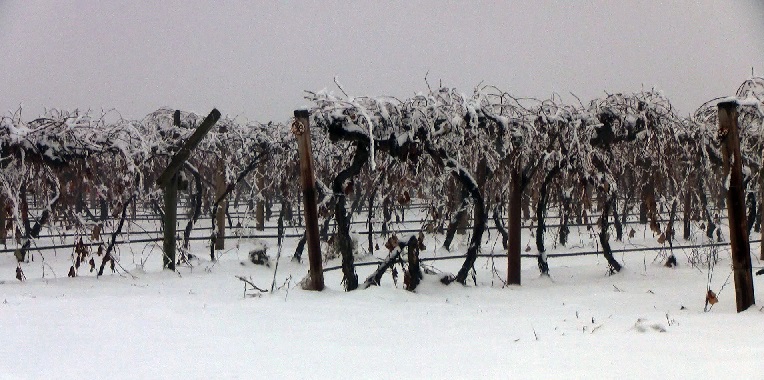Wine Discovery
Wine Genius is not solely a comprehensive and up-to-date resource on Australia's 3,000 plus wine brands and over 30,000 tasting notes. Through Wine Genius’ Wine Discovery page you can explore Australia's great wine regions, keep up-to-date with industry trends and meet Australia’s prominent winemakers. To uncover all this, search our articles and blogs – and feel free to share them with your friends.

Truth and the extreme wine
For a wine to be any good, it must first be true. So argues Nicolas Joly, the esteemed winegrower from the Loire Valley’s Clos de la Coulée de Serrant, first planted by Cistercian monks in 1130. But just what does he mean? What is ‘the truth’? Left to their devices yeasts will do what they always do and convert the sugars present in grape juice into alcohol. Clarify the results and you’ve got wine. But the source of the grapes, the yields and how the fruit is handled are all factors that determine whether a wine will ultimately have a voice. If these factors are unique or extreme in some way, chances are the wine will carry a particularity that cannot be replicated elsewhere. This is what makes wine such an interesting beverage.The more marginal the vineyard site the more the vines struggle to ripen their crop and ultimately the more character will develop in the grapes. The pure citrus character of Clare Valley Riesling and mintiness of classic Coonawarra Cabernet spring to mind. But these are the well known. If you peer a little deeper by following the ‘extremes’ you’ll discover that Australia is replete with an extraordinary array of wines that have a voice, some below the radar. This series of short articles will seek out these gems. To find them we need to look at geographic location, elevation and climate.
1. Latitude: southern character
Australia’s wine regions are geographically diverse and the southernmost, in Tasmania, are definitely viticulturally ‘extreme’ given the latitude of 42°S (further south than Patagonia and exceeded only very slightly by Central Otago). Tasmania produces some of Australia’s finest Riesling, Chardonnay and Pinot Noir. The mild summers and long autumn days suit these varieties that become one-dimensional when they ripen too quickly. For these vines a gradual ripening provides elegance and length with intensity of flavour. It is sometimes said that producers of Australian Riesling seem to be in a race to make the world’s most austere wine, but the natural acidity in Tasmanian Riesling frequently frames wines of considerable poise. Look for Kate Hill Riesling from southern Tasmania to see what I mean. Look out, too, for Pooley’s Coal River Pinot Noir which is fragrant and silky with such good mid-palate density that it rivals the best from New Zealand. Dawson & James Meadowbank Chardonnay, from northwest of Hobart, captures minerality with primary citrus character of the grapes. This sophisticated wine has a layered complexity derived from partial malolactic fermentation and deft use of oak.
2. Life where there’s altitude
It was more-or-less by accident that the world’s best wines came to be cultivated in ‘extreme’ sites. Needing wine for liturgical purposes meant that many of the great European wine regions were established by Cistercian and Benedictine monks well over 1,000 years ago. But these vineyards were necessarily planted in marginal soils, as the more fertile conditions were needed for cultivation of food for sustenance. In time it came to be recognised that by making the vine struggle in the more marginal site resulted in more inflective wines that expressed a sense of place, or terroir. Provided the vine was appropriately matched to site, the earth was given a voice and, to the monks, enabled God to speak directly to them through the land. It is now accepted viticulture that fruit from vines that are not overly vigorous will produce the best quality wines.
The height above sea level is another passport to extreme viticulture. The world’s highest vineyards are mostly found in Latin America at up to 3,000 metres above sea level. In Australia, vineyards at up to 1,000 can be found in Orange, New South Wales. And not far from Mount Kosciuszko, the vineyards of Tumbarumba lie at almost 900 metres above sea level where the temperature drops an average of 0.65°C for every 100 m of altitude. The 300ha of vines cultivated at this altitude enjoy a long growing season courtesy of the extreme temperature fluctuation (very cool nights, warm days). This imparts a firm acid backbone into the wines endowing whites, in particular, with tautness and flinty minerality but without becoming anorexic. Look for chardonnays to have qualities similar to good Chablis, such as Penfolds Bin 311, McWilliams Barwang 842, Hungerford Hill and Chalkers Crossing.
3. Marginal breeds successful
Marginal sites that suit high quality winegrowing can be found other than through altitude and latitude. It is said the world’s best wines often come from regions that experience fairly high daytime relative humidity. When air is saturated with water vapor there is much less moisture stress on vines. For instance, Henty in Victoria has a relative humidity of an astonishing 76%, placing it on a par with ‘green Spain’ (Galicia), source of great wines made from Albariño and Mencía. No surprise then that Henty should be source of some of Australia’s greatest Rieslings: Seppelt’s Drumborg and Crawford River.
Although not as extreme as in Henty, the relative humidity experienced in the warmer Hunter Valley of New South Wales is nevertheless striking (49%). Here the warm nights encourage early flavour ripening which is just as well given the region’s notorious predisposition to heavy rain at ripening and vintage. Hunter winegrowers realised decades ago that if they harvested early in the growing season – before the onset of destructive rains – they could protect the vulnerable thin-skinned Semillon from spoilage. While an early harvest results in reduced sugar volume, it was discovered that Hunter Semillon was otherwise flavour-ripe. The result was the remarkable and unique to Hunter Valley expression of Semillon: a wine of relatively modest alcohol level (about 10%) that undergoes an extraordinary transformation in the bottle. Comparable to perhaps only Chablis, Hunter Semillon develops into a rich, minerally food-friendly wine with toastiness and waxy notes. The best expressions from McWilliams, Tyrells, Andrew Thomas and Brokenwood, among others, are widely available at different pricepoints.
Recent Blogs
Australia’s wine industry is famous around the world for innovation. From the
Read More >>
Fresh Approach
The Wine Genius app is your best guide to wine touring, or
Read More >>
Download the Wine Genius App
Royal Melbourne Wine Show – Friday 16th October Undoubtedly a premier event
Read More >>
What’s On! October 2015
Wine Genius™ Top Picks
Top Wines This Month
Seppeltsfield > 100 Year Old Para Tawny > 1914
+ View Tasting Note99Penfolds > Bin 60A Cabernet Sauvignon Shiraz > 1962
+ View Tasting Note99
Wine Genius’ Best Ever
Seppeltsfield > 100 Year Old Para Tawny > 1914
+ View Tasting Note99Penfolds > Bin 60A Cabernet Sauvignon Shiraz > 1962
+ View Tasting Note99
Top Shiraz This Month
Penfolds > St Henri Shiraz > 2010
+ View Tasting Note98Penfolds > Grange Shiraz > 2004
+ View Tasting Note98
Top Chardonnays This Month
Giaconda > Chardonnay > 1996
+ View Tasting Note98Giaconda > Chardonnay > 2015
+ View Tasting Note97
Top Cabernets This Month
Cullen > Diana Madeline Cabernet Blend > 2009
+ View Tasting Note98Houghton > Jack Mann Cabernet Blend > 2004
+ View Tasting Note97
Best Value Wines This Month
Jim Barry > The Lodge Hill Riesling > 2013
+ View Tasting Note96Tim Adams > Riesling > 2002
+ View Tasting Note96
- Global wine consumption at its lowest in over sixty years
- Yalumba dedicates latest signature wine to former staff memb...
- Sustainability “central” to premium brand positioning of...
- Winemaking project platforms diverse production
- New Zealand’s only glass manufacturer reaches 70% recycled...
- “Common sense” changes proposed for NZ’s alcohol laws
- Drought relief to help SA farmers through one of the driest ...
- The Burges’ Barossa homecoming
- SA wine reaches post-tariff export record, aims to grow Chin...
- winetitles.com.au














